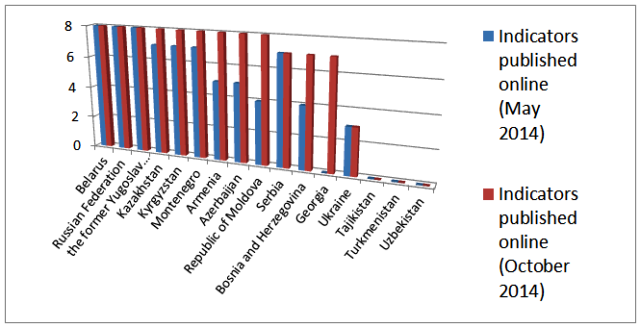Environmental indicators are a key tool for environmental assessment, reporting and policymaking. Appropriately chosen indicators based on sufficient time-series data can show key trends and help describe causes and effects of environmental conditions.
To promote the establishment of a regular process of environmental assessment, the UNECE Environmental Monitoring and Assessment Programme is assisting 16 target countries in Eastern and South-Eastern Europe, the Caucasus and Central Asia to strengthen their capacities to produce and share environmental indicators in accordance with the principles of the Shared Environmental Information System (SEIS). This work is performed by the UNECE Joint Task Force on Environmental Indicators (JTFEI), which reports to the UNECE Committee on Environmental Policy and the Conference of European Statisticians. The ninth session of the Task Force was held in Geneva this month (4–5 November 2014).
The Programme began by assisting target countries to produce and share eight core environmental indicators, in major areas such as water, air pollution, ozone depletion and climate change. Given the progress achieved (see graph), it was agreed to expand the core set of eight indicators and now focus on other environmental issues. Member States participating in the Task Force meeting earlier this month discussed a secretariat proposal to choose an additional set of indicators from a list of 14, chosen by the secretariat from the Indicator Guidelines adopted in 2007 for their links with the two guiding themes of the forthcoming Environment for Europe (EfE) Ministerial Conference in 2016, green economy and air quality, as well as the availability of relevant data in the target countries. At the session, member States selected 6 indicators — related to water, biodiversity, soil and transport — with the aim of having a total of 14 (including the original 8) that could be used in the regional assessment work to be carried out jointly with United Nations Environmental Programme (UNEP) and the European Environment Agency (EEA). That work will feed into the preparation of the Sixth Global Environmental Outlook publication from UNEP and the next EfE Ministerial Conference in Batumi, Georgia.
For further information, please visit:
http://www.unece.org/env/europe/monitoring/index.html
